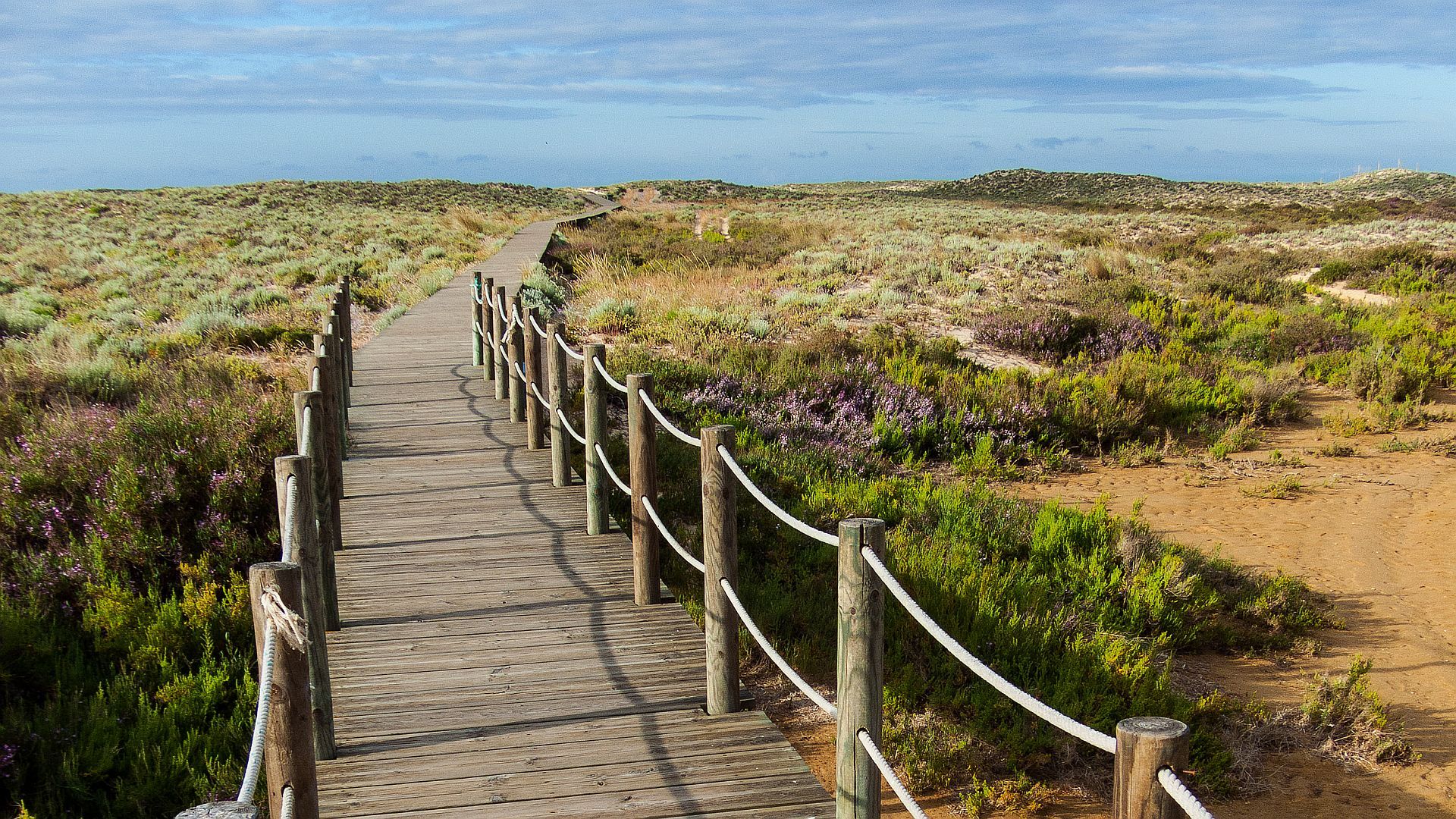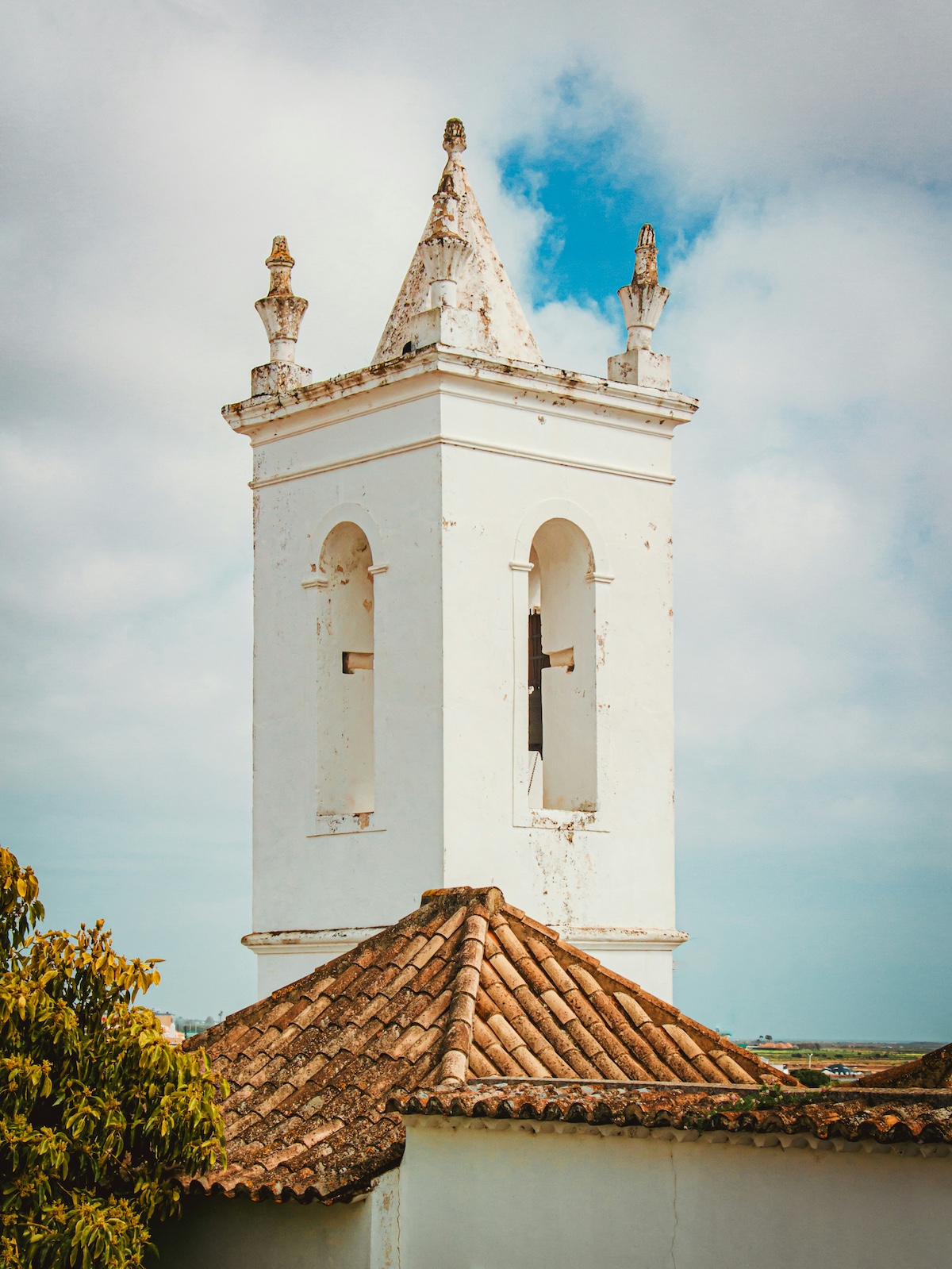JOIN the AFICIONADOS
To receive our world of travel and style delivered straight to your inbox.
Tavira doesn’t sell itself. It just stands there – sun-bleached and sly – watching the rest of the Algarve try too hard. Thirty minutes east of Faro and just 160 km from Seville, this Portuguese town skips the polished brochure pitch in favour of something moodier, more cinematic. You arrive expecting a typical beach escape. What you get is a slow-burn epic – Roman bones underfoot, Moorish silhouettes above, and time that doesn’t tick so much as drift.
There’s a bridge – of course there is. The so-called Ponte Romana stretches across the Gilão River, a seven-arched beauty that claims Roman origin but mostly dates to the 17th century. It’s revisionist history with a perfect reflection – which is also a fair summary of Tavira itself. Beautiful fiction built on beautiful facts.
On either side of the river, the town spills out in chalky whites, dusty pinks, and burnt ochres. The façades are flaking, the rooftops collapsing in on themselves, and the chimneys – distinctive, lattice-like – jut into the sky like clay exclamations. Walk a little and you’ll reach Castelo de Tavira, the remains of an 11th-century Moorish fortress. The ramparts still hold, just about, offering panoramic views across a town that never hurries. From here, it’s terracotta in every direction, curling gently toward the Atlantic.
Tavira once mattered. You can tell from the skyline – not high-rise, but high-church. Over 30 churches, chapels, and convents punctuate the view, marking Tavira’s golden age as a maritime hub built on salt, tuna, and trade routes that spanned from North Africa to Northern Europe. The architecture lingers – Baroque, Manueline, Pombaline – façades that whisper of a past that never quite let go.
One church in particular steals the spotlight: Igreja da Misericórdia. Finished in the mid-16th century, this stone beauty carries a cool elegance, but step inside and the temperature shifts. Cobalt-blue azulejos wrap the walls, each tile a panel in the Passion of Christ. It’s theatrical, yes – but the kind that catches you off guard. The chipped ceramic, the smell of wax and wood, the strange light filtering through at all the wrong angles. It’s imperfect. It’s human. It’s Tavira.

If you're here for the beach – good. But manage expectations. You won’t find DJs or daybeds. Instead, take a small ferry across the Ria Formosa lagoon to Ilha de Tavira, part of the Ria Formosa Natural Park, a protected wetland that snakes along Portugal’s southern coast. The island is a sandbar – long, low, and beautifully bare. No cars, no chaos. Just wooden boardwalks stretching over dunes, the breeze off the Atlantic, and that rarest of luxuries: silence. The further you walk, the less there is. Just salt air, sea lavender, and the endless horizon.
Back inland, the Ria Formosa Natural Park slows the pulse even further. Salt pans shimmer like melted glass. Flamingos strut through the shallows with comic grace. Clam diggers work the mudflats in slow motion, bending into the estuary like time forgot them. It’s wild, yes – but not curated, not performative. It just is.


There’s a feel to this place. A scent, too – citrus trees, grilled sardines, damp books on open windowsills. Tavira draws a certain crowd: the novelist who never finished the manuscript, the Berlin artist who came for a season and stayed, the quiet iconoclast sketching ruins in a pocket-sized Moleskine. You’ll find them in the cafés that double as studios, at the Mercado da Ribeira blending in with the locals, or lingering in the bars that serve local wine without irony or Instagram lighting.
Culture comes in flashes. A cello solo in a cloister. A Saint’s Day parade with brass funk and back-alley fireworks. Tavira doesn’t shout about its events – it doesn’t need to. Even the annual Festa da Ria Formosa, a tribute to the sea and its bounty, feels more like a local secret than a tourist magnet.
Unlike flashier Algarve resorts, Tavira doesn’t boast celebrity visitors or headline chefs. It had Irene Lisboa, the melancholic writer with razor-sharp wit, and António Inverno, a painter of the light – that famous Tavira light – always soft, always tilting toward dusk. You won’t find their names in glossy magazines. That’s the point. Tavira is for people who read the footnotes.
Food here follows the same rules. No fusion, no drama – just elemental Portuguese cooking done well. Octopus grilled until the edges curl. Sardinhas assadas – charred, whole, unapologetic. Bread that matters. Olives that taste of the land. A glass of Vinho Verde, crisp and cold enough to pause a conversation. Dinner is not an event – it’s just what happens when the sun fades and someone lights a candle under a fig tree.
Tavira doesn’t entertain. It offers space – to slow down, to notice things, to be still. You’ll find yourself walking the same cobbled street three times in a day just to see how the shadows shift. You’ll catch yourself staring at a crumbling wall because the patina tells a better story than any guidebook. You’ll lose track of time because time doesn’t track here – it wanders.
This isn’t a place of spectacle. It’s a place of atmosphere. A place that doesn’t need to explain itself. Tavira lingers. It gets under your skin. It becomes part of your internal weather – a slow, warm front that refuses to clear. Long after the flight home, long after the tan fades, Tavira stays. And you’ll find yourself planning a return before you’ve even unpacked.